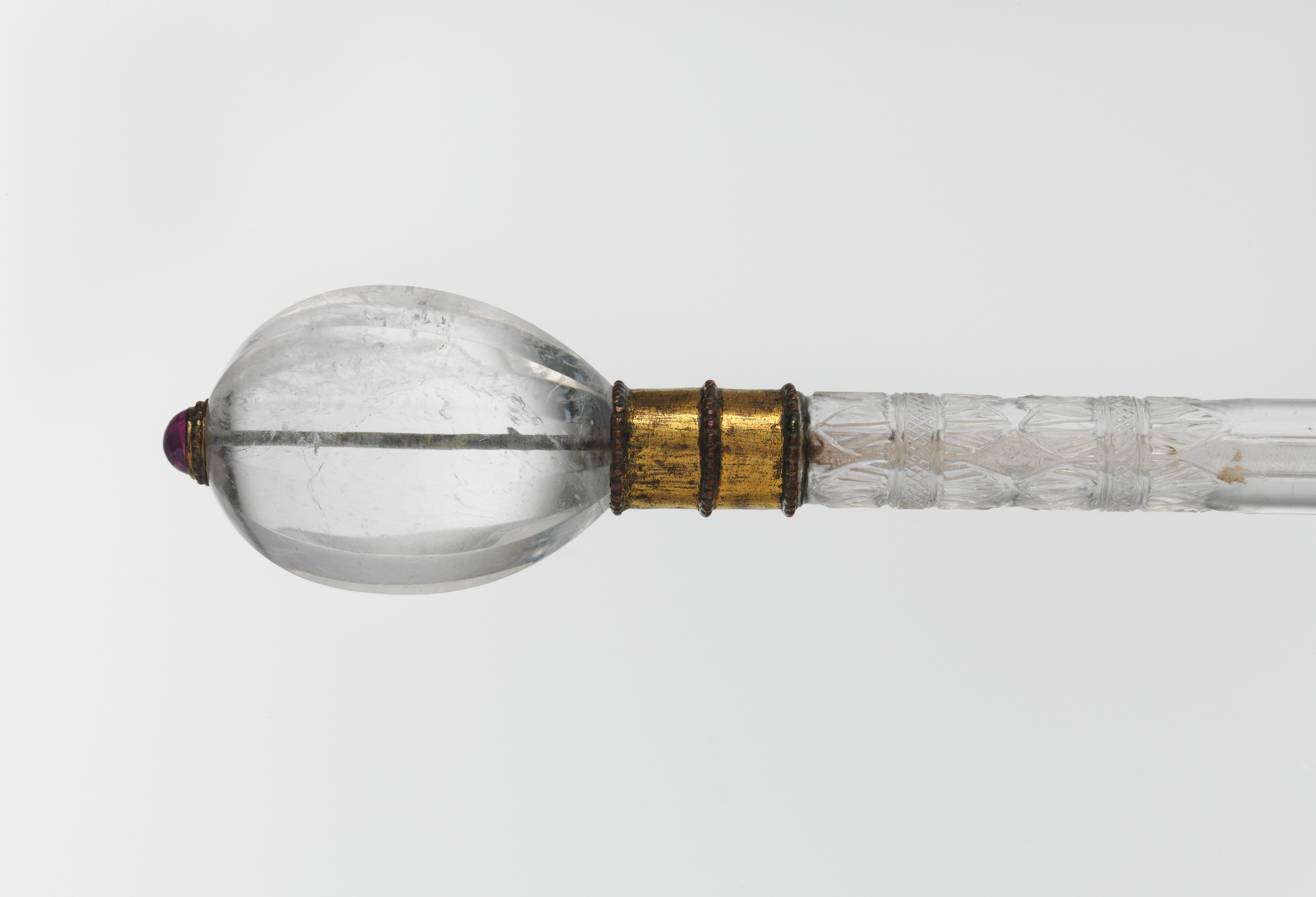Ceremonial Mace
This ceremonial mace is a rare example fashioned entirely from rock crystal. Rock crystal was often carved to produce luxurious objects, including an Islamic, perhaps Fatimid, mace that became part of the Hungarian royal regalia. Several detached rock-crystal mace heads are known, among them a probably tenth- to eleventh-century Iranian example in the Metropolitan Museum's collection (acc. no. 1981.86).
Most likely from Mughal India, this mace has a haft that is decorated in a style found on several Indian maces and axes now in the Wallace Collection, London (nos. 1563 and 1595). A very similar ovoid head is on an all-steel Indian mace dated 1880 and now in the Khalili Collection, London (no. MTW 1130). The ovoid shape, however, is not confined to India; similar mace heads are known from Bukhara as well. Much earlier examples of ovoid mace heads exist, probably from the eleventh or twelfth century, among them a Seljuq mace in the Furusiyya Art Foundation, Vaduz (no. R-101). It is likely that this is a Central Asian type imported into India by the Mughals, who originally came from Bukhara.
The debased acanthus leaves with which the rock-crystal shaft of this example is decorated preclude a dating to the grand period of Mughal art during the seventeenth century. Consequently a later dating, provisionally to the eighteenth century, is suggested.
Due to rights restrictions, this image cannot be enlarged, viewed at full screen, or downloaded.
This artwork is meant to be viewed from right to left. Scroll left to view more.





